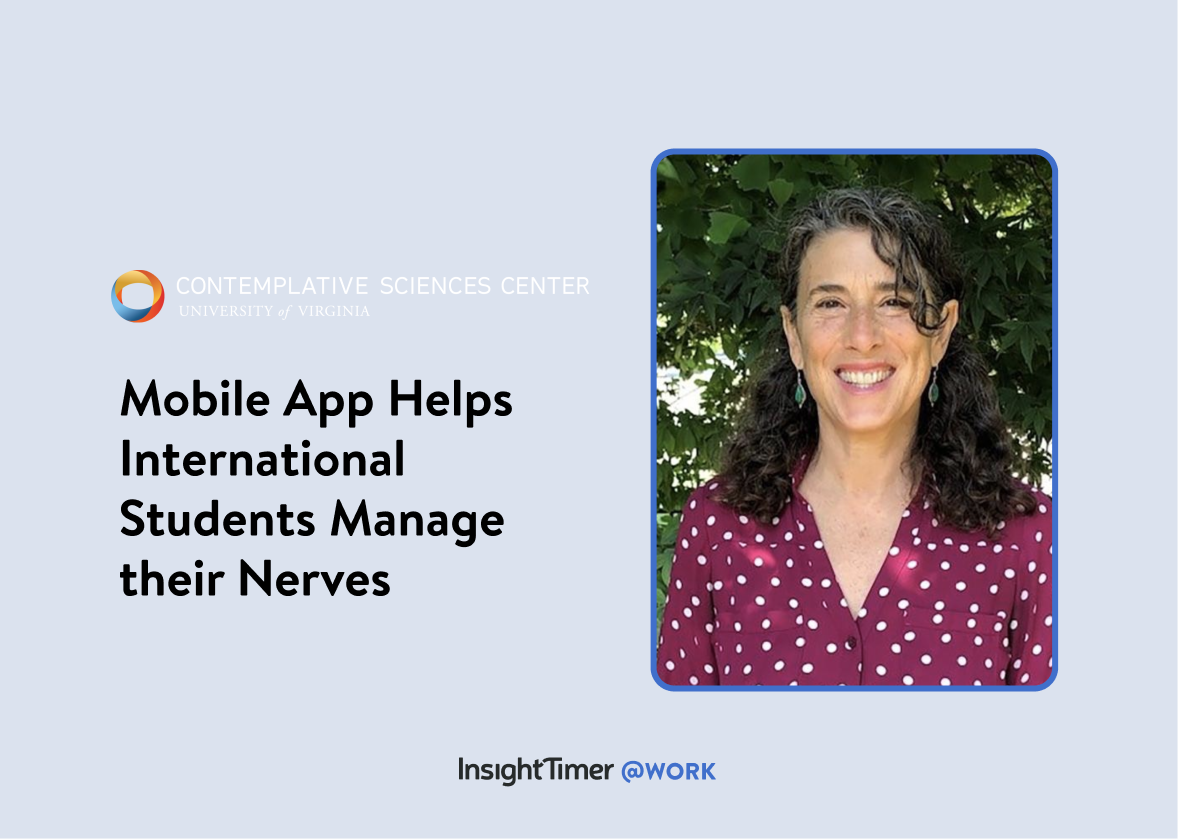Many of our work lives are filled with endless tasks and deadlines, making work-related stress increasingly common. In fact, 83% of workers in the United States suffer from work-related stress, and 54% report that work stress affects their personal lives.
Consistent, long-term exposure to work-related stress can lead to burnout if we fail to address it. When the physical or emotional symptoms of stress begin to interfere with our performance, it may be time to take a leave of absence.
Requesting mental health leave isn’t easy, but it can make a huge difference in our ability to cope with daily stressors. Learn more about stress leave, the signs of needing it, and how to best use this time if you take it.
Key takeaways:
- Stress leave is crucial when we feel consistently overwhelmed by work, offering a path to recovery and mental wellness.
- Recognizing the emotional and physical signs of needing stress leave is the first step toward taking necessary action for our health.
- Some individuals may qualify for the Family and Medical Leave Act (FMLA), which provides 12 weeks of unpaid leave.
- You can maximize your stress leave by establishing a routine, practicing mindfulness, and prioritizing self-care, among other things.
Need support for your stress? Insight Timer’s therapist-created stress worksheets and resources can help identify stress patterns and regulate the nervous system.
What is stress leave?
Stress leave can be considered a medical leave of absence that allows employees to take time off to address their stress. An effective stress leave can be crucial for avoiding future health problems.
Whether or not your company offers stress leave depends on factors like:
- federal and state regulations
- the size of your company
- company-specific policies
In the U.S., stress leave may be covered by the Family and Medical Leave Act. With a certificate from a medical professional, employees can receive up to 12 weeks of unpaid leave (more on that below).
Freelancers and self-employed people can also take stress leave. If you fall into this category, you don’t need to apply for FMLA leave — when and how long you take stress leave is completely at your discretion.
For a deeper dive into managing work-related stress and understanding the signs of burnout, explore our insights in this article.

What are the signs that you may need stress leave from work?
Recognizing that you’re overworked and burning out is the first step. There are many signs — both physical and emotional — to look out for when considering stress leave. Let’s take a closer look:
Emotional signs
Many of our work-related stress symptoms manifest emotionally. These include:
- feelings of dread when working
- spurts of anxiety throughout the workday
- increased irritability, both at home and at work
- inability to focus on important tasks
- feeling overly worried about performance
Physical signs
The effects of stress aren’t just emotional: Our bodies physically carry the burden of stress, too. Everything from our musculoskeletal to cardiovascular and gastrointestinal systems can be significantly impacted. If you’re dealing with significant workplace stress, you may experience:
- muscle tension, particularly in the neck and back
- chronic pain, including headaches
- high blood pressure
- acid reflux
- bloating
- irregular menstrual cycles
If you notice any of these symptoms, take it as a nudge to consider a stress leave. These symptoms may also be signs of a greater medical issue. Please consult with a healthcare professional to determine the cause of your symptoms.
The legal framework for stress leave and navigating employer policies
There are a few things you’ll want to get sorted out before requesting stress leave, like whether or not you qualify for FMLA coverage and what your employer’s specific leave policies are.
Read up on your rights
As we briefly mentioned above, the Family and Medical Leave Act (FMLA) offers job-protected, unpaid leave for medical reasons in the U.S. Eligible employees can take up to 12 weeks. But not every employer or employee qualifies.
To be covered under the FMLA, a private-sector employer must employ 50 or more people in 20 or more weeks of this calendar year or the previous one. Eligible employees must work for a covered employer for a minimum of 12 months and have at least 1,250 hours of service before their leave starts.
If you meet these qualifications and want to take a leave of absence, you’ll need to certify that you have a serious health condition with a healthcare provider.
Keep in mind that each state has different regulations, so it’s important to familiarize yourself with your state’s laws and other medical leave laws regarding stress leave. Visit The Department of Labor’s website for more information about FMLA leave or your state government’s website to learn about local regulations.
Review your employer’s policies
Each employer may have their own policies regarding stress leave in addition to the legal requirements. For example, it’s common for employers (especially in tech) to offer mental health days. Other employers may offer unlimited paid time off (PTO) that you can use however you wish — no doctor’s note required. Understand these policies ahead of time so you can prepare your case and approach your employer confidently.
How to prepare for and request stress leave from work
Once you’ve familiarized yourself with the relevant laws and your employer’s leave policies, you’re ready to request stress leave.
Preparing for stress leave from work may require some thoughtful planning to ensure the process is smooth for both you and your employer. Here’s a step-by-step:
-
Document your stress and its impact
In case documentation is necessary, keep a detailed record of how stress affects your personal life and daily work to strengthen your request. This documentation can include notes on specific incidents, common stressors you face, your emotional and physical symptoms, and any conversations with supervisors or HR about your stress levels.
-
Consult with a healthcare provider
A critical step in preparing for stress leave is consulting with a healthcare provider or mental health professional. If you plan on applying for FMLA leave, you’ll need to obtain certification from a doctor to support your leave application. In any case, consulting with a mental health professional can help you manage your stress symptoms.
-
Send your request
When you’re ready to request stress leave, write a clear and concise letter or email to your employer, outlining your need for leave based on medical advice. Include any required documentation from your healthcare provider.
-
Talk with HR or your manager
While this step is completely optional, discussing your need for leave with your manager or HR team can provide valuable insights for the company. In some cases, this can help them understand how the work environment is impacting employees and make necessary adjustments for the future.
How to maximize your stress leave from work
How you spend your stress leave will greatly influence your mental and emotional state upon returning to work. Here’s how to make the most of it while improving your mental well-being and physical health:
Establish a routine
Create a balanced daily routine that you genuinely enjoy. This may include time for relaxation, physical activity, and hobbies or interests you’ve been wanting to explore. A structured day can provide a sense of normalcy and purpose.
Looking to implement more healthy habits into your routine? Learn how to turn down the volume of daily stress and anxiety with these seven daily habits.
Practice mindfulness and meditation
Mindfulness and meditation practices are great for reducing stress. In fact, a study from Frontiers in Psychology found that those who practiced mindfulness reported less stress and higher work engagement.
Not sure where to start? Try implementing a five to 10-minute practice each day, like centering yourself with body scan meditations or envisioning a peaceful, stress-free life with visualizations.
Try yoga and physical exercise
Moving our bodies is one of the easiest ways to relieve stress. Many studies, including this one, have proven the link between physical activity and better mood. And certainly, most of us have experienced this directly in our own lives.
Yoga, in particular, is known for its many emotional and physical benefits (i.e., reducing stress, improving flexibility, and so on). The best part: You don’t need any experience! Yoga practices exist for practitioners of all levels. If you’re looking for more intensity and flow between poses, try vinyasa yoga. Alternatively, hatha yoga offers a more gentle approach.
Get access to the world’s best yoga and meditation teachers on Insight Timer. Explore our yoga sessions for beginners and experienced yogis alike.
Focus on self-care
Taking care of yourself is especially important during stress leave. Use this time to do things that nourish your soul and improve your well-being, like:
- going on long walks in nature
- reading a book
- spending time with family and friends
- practicing good sleep hygiene
- engaging in creative activities
Seek mental health support
There are many effective ways you can manage stress on your own, but sometimes, having support from a licensed professional is necessary. Therapy or support groups can provide valuable strategies and stress management techniques that you can apply in your everyday life — which will be particularly useful once you get back to work.
Plan your return to work
Begin thinking about your return to work before the end of your leave. Consider what changes or accommodations, such as a modified workload or flexible working hours, might help increase work performance and manage your stress better. This will be important to communicate to your management or HR department once you return.
Tips for a smooth return after stress leave
When stress leave is almost over, returning to work can feel like stepping into a new chapter of your professional life. Here are some tips to help ensure a smooth transition back into the workplace:
Communicate your needs
Have an open conversation with your manager about any ongoing needs or adjustments that may help you manage your stress. You’ll likely need to set clear boundaries regarding your work-life balance, like shutting your work computer off or silencing notifications by a certain time each day.

Prioritize your tasks
Ease back into work by prioritizing your tasks. Focus on what’s most important and give yourself permission to take things one step at a time. You may be tempted to catch up on everything at once, but that’s a surefire way to stress yourself out.
Maintain healthy habits
Continue the healthy habits you developed during your stress leave, such as regular exercise, meditation, and mindful eating. These practices can help sustain your well-being, especially when work inevitably becomes hectic again.
Monitor your stress levels
Keep an eye on your stress levels and be proactive in managing them. Recognizing the early signs of stress is key to avoiding burnout. Utilize the stress management techniques you learned during your stress leave and be sure to take short breaks throughout the day.
Taking care of your mental health
Dedicating time to our mental health is just as important as investing time into our work. After all, our mental well-being is what enables us to achieve our dreams and navigate life’s complexities with grace.
At Insight Timer, we’re committed to supporting your mental health journey. With a wealth of resources, from guided meditations to expert-led courses, we’re here to help you find balance, peace, and resilience.
Discover Insight Timer’s variety of free guided stress meditations. From breathing techniques to mindful body scans, Insight Timer offers something for everyone!
FAQs about stress leave
What do you say to your doctor to get stress leave?
Be honest about your stress levels and how it’s affecting your life and work. Ask for advice on taking a stress leave, including any documentation you might need.
Can I be fired while on FMLA leave?
No, the FMLA protects employees from being fired, demoted, or penalized in any way for taking leave under its provisions. The Americans with Disabilities Act (ADA) also specifies that employees are generally protected from being fired for legitimate absences due to mental health conditions.
What documentation is required for stress leave from work?
Usually, you will need a medical certification from a healthcare provider that confirms your need for stress leave.
Can stress leave be covered by workers’ compensation?
Workers’ compensation for stress leave can be complex and varies by state. It may cover stress leave if you can prove that the workplace conditions are the primary cause of your mental health issues. Consult with your HR department and a legal professional to understand if your situation qualifies under your state’s workers’ compensation laws.
How does stress leave differ from sick leave?
Stress leave is generally for recovery from work-related mental health issues, such as severe stress or burnout, and may require a doctor’s note to be covered under the FMLA. Sick leave, on the other hand, typically covers short-term absences for a variety of illnesses and is often accrued and used as individual sick days. If an employee needs an extended leave of absence due to illness, this may be covered under the FMLA, too.
Can my doctor write me out of work for stress?
Yes, a healthcare provider can provide documentation certifying that you need a leave of absence from work due to stress-related issues.
Can I use FMLA for burnout?
Yes, if burnout is causing serious health issues or medical conditions and you have medical certification, it can be a qualifying reason under the FMLA.
Disclaimer: This article is for information only and should not be considered as medical advice. If you have concerns about any mental health conditions mentioned in this article, please seek a medical or mental health professional for help.
References
Fact Sheet #28G: Medical Certification under the Family and Medical Leave Act. (n.d.). DOL. https://www.dol.gov/agencies/whd/fact-sheets/28g-fmla-serious-health-condition
Family and Medical Leave Act. (n.d.). DOL. https://www.dol.gov/agencies/whd/fmla
Workplace Stress. (n.d.). www.osha.gov. https://www.osha.gov/workplace-stress
Stress effects on the body. (2023). https://www.apa.org. https://www.apa.org/topics/stress/body
Bartlett, L., Buscot, M., Bindoff, A., Chambers, R., & Hassed, C. (2021). Mindfulness is associated with lower stress and higher work engagement in a large sample of MOOC participants. Frontiers in Psychology, 12. https://doi.org/10.3389/fpsyg.2021.724126
Schultchen, D., Reichenberger, J., Mittl, T., Weh, T. R. M., Smyth, J. M., Blechert, J., & Pollatos, O. (2019). Bidirectional relationship of stress and affect with physical activity and healthy eating. British Journal of Health Psychology, 24(2), 315–333. https://doi.org/10.1111/bjhp.12355



